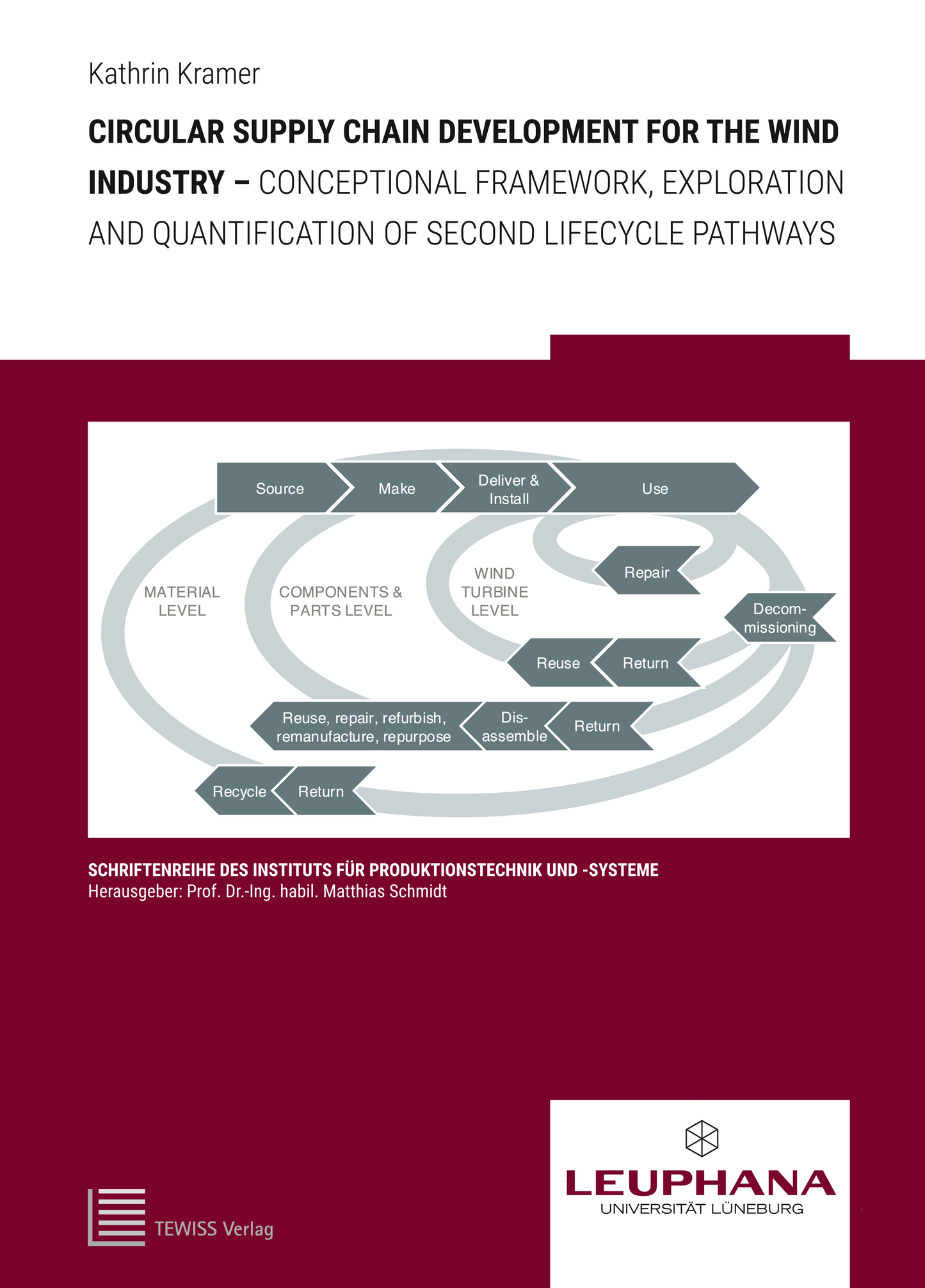Circular Supply Chain Development for the Wind Industry
Autorin: Kathrin Kramer
ISBN: 978-3-69030-028-5
Dissertation, Leuphana Universität Lüneburg, 2024
Herausgeber der Reihe: Matthias Schmidt
Band-Nr.: IPTS 01/2025
Umfang: 257 Seiten, 90 Abbildungen
Schlagworte: Circular economy, circular supply chain management, wind industry, second lifecycle, component and material flow forecasts, sustainability
Kurzfassung: A rapid scaling from 1 TW to more than 10 TW of wind capacity is necessary until 2050 for the transformation of the energy system. As the installation of the required wind turbines will demand a significant input of materials and resources, the transition to a circular economy is seen as a promising approach to contribute to a sustainable and resilient scaling of supply chains in the wind industry. Despite, this recognition, research on circular supply chain management (CSCM) for the wind industry is rare, particularly for second lifecycle pathways of decommissioned wind turbines. In addition, understanding the circular economy pathways for rotor blades is critical to helping the industry build the recycling infrastructure for composites, which has yet to be established on an industrial scale.
The study takes a first step towards understanding CSCM and circular supply chains for second lifecycle pathways through the implementation of a mixed methods research Design and by exploring the mature onshore wind markets Denmark and Germany from a multi-stakeholder perspective. A systemic and multi-level conceptual framework for CSCM in the wind industry is developed that details the circular flows of wind turbines, components and materials. Furthermore, interviews are conducted with industry experts and the results of the analysis reveal that a second lifecycle for decommissioned onshore wind turbines is common in Denmark and Germany. Additional insights are provided into the complex decision-making processes of the decision to decommission an onshore wind turbine and the choice of the subsequent circular economy pathway. To support capacity planning of supply chain actors and investment decisions in new infrastructure (e.g. blade recycling facility), new turbine, component and material flow models are developed and applied to the installed onshore wind turbine fleet in Denmark and Germany. Based on the newly derived empirical findings and comprehensive market data, annual estimates of decommissioning, second-lifecycle and recycling quantities are provided. It is therefore the first study to introduce annual second-lifecycle flows and to systematically include it into the estimation of recycling flows. The results reveal that the thresholds for a new blade recycling facility of 5,000-15,000 tonnes per year are not met in any of the scenarios provided for Denmark. For Germany, however, it is estimated that the minimum tonnage requirement will be exceeded within the next five years, provided that at least 30 % of the decommissioned onshore wind turbines are retained for recycling.
In conclusion, the findings of this study offer valuable insights which can inform the planning of circular supply chains in the wind industry. The study contributes to improving the decision-making basis for policy makers and companies to achieve sustainable resource use along the entire circular value chain.


